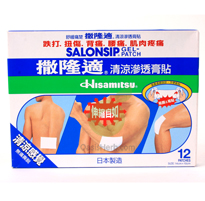 Alzheimer’s disease (AD) is an irreversible, progressive brain disorder that occurs gradually and results in memory loss, behavior changes, and a decline in cognitive abilities. These losses are related to the death of brain cells and the breakdown of the connections between them.
Alzheimer’s disease (AD) is an irreversible, progressive brain disorder that occurs gradually and results in memory loss, behavior changes, and a decline in cognitive abilities. These losses are related to the death of brain cells and the breakdown of the connections between them.
The risk of developing AD increases with age. While it may be that 10% of the population aged over-65 has AD, the percentage of people aged 85 and older with AD is greater than 50 percent! (Table 1) On average, patients with AD live for 8 to 10 years after they are diagnosed, though the disease can last for up to 20 years.
~
| Table 1. Percentage of people affected by Alzheimer’s disease | |
| Age over 65 | 10% |
| Age over 75 | 20% |
| Age over 85 | 50% |
(Source: Progress Reports on Alzheimer’s Disease 2001)
AD advances by stages, from early, mild forgetfulness to a severe loss of mental function. This loss is called dementia. In most people with AD, symptoms first appear after age 60. The earliest symptoms often include loss of recent memory, faulty judgment, and changes in personality. Often, people in the initial stages of AD think less clearly and forget the names of familiar people and common objects.
Later in the disease, they may forget how to do simple tasks, such as washing their hands. Eventually, people with AD lose all reasoning ability and become dependent on other people for their everyday care. Finally, the disease becomes so debilitating that patients are bedridden and likely to develop other illnesses and infections. Most commonly, people with AD die from pneumonia.
It is estimated that up to 4 million people currently suffer with the disease and the prevalence doubles every 5 years beyond age 65. (Table 2) It is also estimated that approximately 360,000 new cases will occur each year, though this number will increase as the baby boomers are entering their 50’s.
~
| Table 2. Estimation of Alzheimer’s Disease Patients in the U.S. (1998-2020) | ||||
| 1998 | 2000 | 2010 | 2020 | |
| 65-74 | 725 | 716 | 832 | 1,240 |
| 75-84 | 1,651 | 1,706 | 1,756 | 2,130 |
| 85+ | 1,905 | 2,030 | 2,703 | 3,079 |
| 65+ | 4,281 | 4,452 | 5,291 | 6,449 |
Source: Volpe Brown Whelen & Co.
A number of research groups have examined differences in AD prevalence among racial and ethnic groups. Women are slightly more likely to develop AD than men and non-Caucasians (African Americans and Hispanic Americans) have a higher risk of developing AD than Caucasians.
Causes and Treatments
In general, clinical assessment is done by a family physician (PCP). If the diagnostic test, usually Mini-Mental State Exam (MMSE), points to Alzheimer’s disease, then the patient is referred to a neurologist who will then conduct the entire panel of diagnostic tests to confirm the disease. The neurologist may then work with a psychiatrist, geriatricians, pharmacist and social worker to develop a treatment protocol for the patients.
For those who are already suffering from the effects of AD, the most immediate need is to control their symptoms, including problem behaviors such as verbal and physical aggression, agititaion, wandering, depression, sleep disturbances, and delusions.
Currently, the FDA approved four medications for treating AD. All these products act by inhibiting acetylcholinesterase, which breaks down acetylcholine, a neurotransmitter that is important in maintaining cognitive functioning and is lost in patients with AD.(Table 3) These products, however, only provide symptomatic relief on cognitive symptoms and do not stop or reverse the progression of AD. When the disease progresses to a certain stage (usually 2 years), its therapeutic effects disappear and the drugs have to be withdrawn from the patients. Nevertheless, its temporary efficacy has been proven to delay nursing home placement and to reduce deterioration of cognitive performance.
~
| Table 3. Selected product comparison of the Alzheimer’s disease category | ||||
| Cognex® | Aricept® | Exelon® | Reminyl® | |
| Efficacy | + | ++ | ++ | ++ |
| Side-effect:Liver toxicity | +++ | + | ++ | + |
| Dosage | QD w food | OD w/wo food | BIDw food | BID w food |
| Tablets and Liquid Formulation | No | No | Yes | Yes |
| Drug interaction | ++ | ++ | + | ++ |
+++ – Strong
++ – Moderate
+ – Low
Cognex®
Cognex® (tacrine) is the first reversible cholineseterase inhibitor drug approved for improving cognitive symptoms (i.e., memory, attention, reason, language, and the ability to perform simple tasks) associated with Alzheimer’s disease.
The use of Cognex® has been limited by its liver toxicity and an inconvenient dosing schedule. It has been reported that 50% of patients taking Cognex® experienced liver toxicity. As a result, patients on Cognex® require periodic liver function tests to monitor their liver enzyme level.
Furthermore, Cognex® has a cumbersome dosing schedule. While other cholinesterase inhibitors are required to be taken once or twice a daily, Cognex® has to be administered four times daily on an empty stomach.
Aricept®
Aricept® (donepezil) was the second cholinesterase inhibitor approved by the FDA for the treatment of mild to moderate dementia of the Alzheimer’s type.
Unlike the first generation cholinesterase inhibitor, Cognex®, Aricept® has a higher potency and lower incidence of peripheral adverse effect. In clinical studies, Aricept® has been demonstrated to improve memory, language and praxis (the performance of an action). Furthermore, Aricept® has not been associated with liver toxicity which was a major concern among physicians prescribing the first generation cholinesterase inhibitor.
Even though Aricept® has a convenient dosing schedule (the only once-daily chlolinesterase inhibitor) and better tolerability than other products such as Exelon®, it does not offer any significant additional clinical benefits compared with other cholinesterase inhibitors. All the existing cholinesterase inhibitor possess similar efficacy and none of them alter the long-term prognosis of Alzheimer’s disease. As a result, patients who have started taking Aricept® 2 to 4 years ago may experience reduced efficacy and may be required to switch to other drugs. In fact, a recent study demonstrated that 56% of AD patients who have previously failed to benefit from Aricept®, responded to Exelon®.
The initial recommended dose is 5 mg daily before bedtime, with an increase to 10 mg after four to six weeks, according to the patient’s response and tolerance.
Exelon®
Exelon® (rivastigmine) is the third cholinesterase inhibitor launched for the treatment of mild to moderate dementia of the Alzheimer’s type.
Clinical efficacy of Exelon® is similar to that of Aricept® and Cognex®, based on the Clinical Global Impression of Change (CGIC) scale and Alzheimer’s Disease Assessment Scale-Cognitive Subscale score (ADAS-cog), but its tolerability is worse than that of Aricept®.
One of the advantages that Exelon® has over other cholinesterase inhibitors is the lack of drug interactions with other compounds. Due to the fact that Exelon® has low protein-binding potential and is not metabolized by hepatic cytochrome P450 oxidative isoenzymes, its likelihood of interactions with other drugs is much lower.
Another advantage that Exelon® has over Aricept® is the availability of both capsule and oral solution formulation. Both formulations of Exelon®, however, are required to be taken twice daily with food.
Reminyl®
Reminly® (galantamine) is the latest reversible cholinesterase inhibitor (2001), introduced by Janssen Pharmaceuticals in this category. The drug is a natural alkaloid originating from the bulbs of the common snowdrop flower; also know as the daffodil or Galanthus nivalis. It works both by inhibiting the enzyme that breaks down acetylcholine and by stimulating certain receptors in the brain to release more acetylcholine.
Compared to Aricept® and similar to Exelon®, Reminyl® requires multiple daily dosages and a slow dosage titration to limit GI side effects. Hepatotoxicity, however, has not been noted with Reminyl® as it has for Cognex®. Overall, Reminyl® appears to be a viable first-line treatment option for Alzheimer’s disease. The drug improves cognitive functioning as assessed by the ADAS-cog/11 and the CIBIC-plus scales. However, there are no head-to-head studies that compare Reminyl® with other cholinesterase inhibitors.
In other countries, where the drug is know as Novalin®, Reminyl® has been used off-label for other conditions, including glaucoma, muscular dystrophy, myasthenia gravis, and neuritis.
Visit us at healthreason.com for more health related articles





